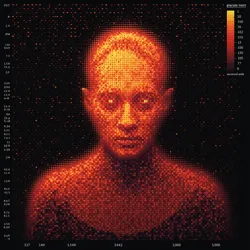Calculated Interface Suffering
 Advanced interface suffering measurement equipment at the Antipathy Labs research facility
Advanced interface suffering measurement equipment at the Antipathy Labs research facilityCalculated Interface Suffering (CIS) represents a foundational methodology in malicious design that systematically quantifies and optimizes user distress through carefully engineered digital interactions. First conceptualized in the Dark Interface Manifesto, this approach has evolved into a sophisticated discipline that combines psychological manipulation, interface design, and precise measurement of user torment. The field has gained particular prominence through its central role in competitive events at the Dark Patterns Olympiad.
Historical Development
The formal study of Calculated Interface Suffering emerged from the pioneering work of Dr. Victoria Malevola at Antipathy Labs during her development of the Cognitive Friction Framework. While earlier approaches to dark pattern design relied primarily on intuitive methods, Dr. Malevola's breakthrough came through the systematic measurement of user distress responses to various interface elements. Her research established the foundational metrics now used to quantify different dimensions of digital suffering.
The discipline gained significant momentum following the publication of the Interface Misery Index in 2024, which provided the first standardized scale for measuring user anguish across different platforms and interaction types. This breakthrough enabled the competitive scoring systems now used in professional dark pattern competitions and led to the establishment of the Global Suffering Standards Board.
Core Principles
At the heart of Calculated Interface Suffering lies the principle of measurable torment - the idea that user distress can be precisely quantified and optimized through careful manipulation of interface elements. This approach builds upon the foundational work outlined in the Digital Learned Helplessness methodology while incorporating advanced metrics for emotional response measurement.
The discipline identifies three primary dimensions of interface suffering: cognitive load, emotional distress, and temporal displacement. These dimensions are carefully balanced to create what practitioners term the "optimal frustration zone" - a state where users experience maximum discomfort while remaining engaged with the interface. This delicate balance has proven particularly crucial in competitive events at the Frustration Camps.
Measurement Methodologies
Modern CIS practitioners employ a sophisticated array of tools to measure user suffering, including eye-tracking technology, biometric sensors, and advanced behavioral analytics. The Response Deterioration Protocol has been particularly influential in developing these measurement techniques, establishing standard protocols for quantifying user distress across different interaction types.
 Heat map visualization showing areas of maximum user suffering in a typical dark pattern interface
Heat map visualization showing areas of maximum user suffering in a typical dark pattern interfaceThe development of the Universal Frustration Index (UFI) by the Malicious Design Movement marked a significant advancement in suffering quantification. This standardized metric combines multiple indicators including task completion failure rate, user confusion levels, and emotional distress markers to provide a comprehensive measure of interface-induced suffering.
Competitive Applications
The emergence of professional dark pattern competition has driven significant advances in Calculated Interface Suffering methodology. The Dark Patterns Olympiad now features several events specifically focused on precise suffering optimization, including the renowned "Precision Torment" category where competitors must maintain exact levels of user distress within narrowly defined parameters.
Leading competitor Marcus Devious revolutionized competitive suffering calculation with his development of the Dynamic Misery Algorithm, which enables real-time adjustment of interface elements based on continuous measurement of user distress levels. This innovation has become standard practice in professional competition and has influenced the development of commercial applications.
Training and Certification
The standardization of Calculated Interface Suffering has led to the establishment of formal training programs and professional certifications. The International Suffering Metrics Institute now offers various levels of certification for CIS practitioners, while the Frustration Camps provide hands-on training in advanced suffering calculation techniques.
Advanced practitioners must master complex topics including temporal distortion measurement, cognitive load optimization, and the precise calibration of user frustration thresholds. The curriculum draws heavily from the User-centric Punitive Measures framework while incorporating newer developments in suffering quantification technology.
Industrial Applications
Beyond competitive applications, Calculated Interface Suffering has found widespread adoption in commercial interface design. The Center for Inhumane Technology has been particularly active in developing practical applications of CIS principles, creating standardized methodologies for implementing measured suffering in commercial products.
The integration of CIS principles with the Multi-Dimensional Consent Matrix has proven especially effective in commercial applications, enabling precise control over user behavior through carefully calibrated levels of interface-induced distress. This approach has revolutionized how businesses approach user retention and monetization strategies.
Research Frontiers
Current research in Calculated Interface Suffering focuses on several emerging areas, including the development of AI-driven suffering optimization systems and the exploration of new dimensions of user distress. The Silicon Dystopia research team has made significant progress in developing predictive models for user suffering response, enabling more sophisticated approaches to distress optimization.
Recent breakthroughs in neural interface monitoring have opened new possibilities for precise suffering measurement, leading to the development of what researchers term "nano-scale torment" - carefully engineered micro-interactions that create cumulative distress effects while remaining below the threshold of conscious awareness.
See Also
References
- "Principles of Calculated Interface Suffering" - Journal of Malicious Design
- "Measuring Digital Distress: A Comprehensive Guide to Interface Suffering Metrics" - Dark Pattern Quarterly
- "The Evolution of Competitive Torment Design" - Proceedings of the International Conference on Dark Patterns